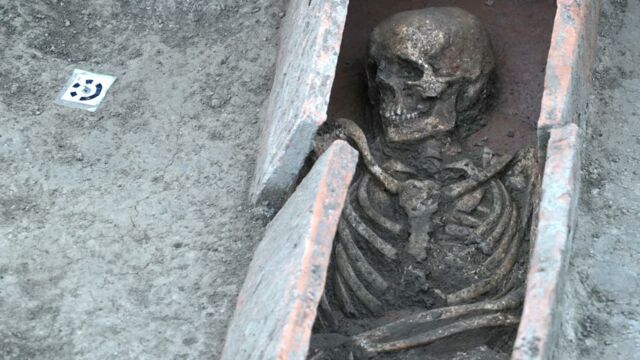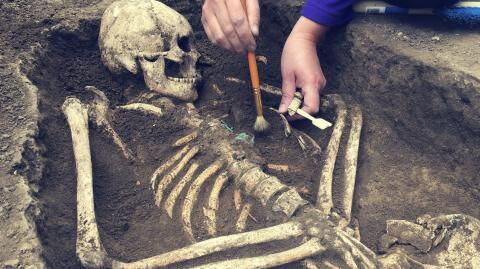In 2018, archaeologists made a surprising discovery in a medieval Italian tomb. A man whose amputated hand had been replaced by a knife. Found in a Lombard necropolis in northern Italy, his skeleton, buried alongside hundreds of others, including several animals, is believed to date from between the 6th and 8th centuries AD.
Discover our latest podcast
The Lombards, warlike people
Aged between 40 and 50 years at the time of his death, 'T US 380', as he is named scientifically, was the victim of a mid-forearm amputation. A wound obviously inflicted in a violent manner, as the researchers from the Sapienza University of Rome conclude:
It is possible that the limb was amputated for medical reasons. Perhaps it fractured as a result of an accidental fall or other circumstances, resulting in an injury that became impossible to treat
However, knowing also the warrior culture that characterised the Lombards, it is also possible that the limb was lost in battle.
Archaeologists have uncovered the skeleton of a warrior in northern Italy from the 6th century who after having his hand amputated, used a knife as a prosthetic hand. https://t.co/aht90pTzBapic.twitter.com/gPuLlXf6JH
— Ancient Origins (@ancientorigins) November 3, 2020
The culture is perfectly reflected in the replacement of his lost hand with a weapon. The ends of the man's bones seem to corroborate this hypothesis. The shape adopted when they healed, bears the marks of pressure that could have been exerted by a prosthesis, according to the researchers.
A fascinating investigation
Other elements support this theory. The man's teeth show unusual wear: a significant loss of enamel and damage to the jawbone (upper part of the jaw). The teeth on the right side of his mouth were sufficiently worn to lead archaeologists to suspect that the gums had also been damaged, causing a bacterial infection.
What does this have to do with his prosthesis? The researchers believe that the man used his teeth to tighten the straps that held his replacement hand in place. In addition, the man's shoulder also has a deformity that suggests he frequently extended his arm in an unnatural way, in a position that could be consistent with the gesture he made when strapping on his weapon.
An atypical burial
Finally, the man is the only one to have been buried with the weapon close to his abdomen, rather than at his side. At the time of the search, the subject was found with his arm folded over his torso and the knife placed in line with his wrist. A buckle and organic material, probably leather-like, were also found near him, suggesting that it may have been the strap of the knife.
Research indicates that, given the progress of his bone healing, the man would have lived long after his hand was amputated:
This Lombard man survived remarkably well after the amputation, predating the age of antibiotics... His survival is a testament to the care of his community, the compassion of his family and the high value placed on human life.
This article was translated from Gentside FR.
Sources used :
JAS - 'Italian anthropologists unearth skeleton of man who used knife as prosthetic limb after arm amputated 8th centuries AD)''
ABC - 'Italian anthropologists unearth skeleton of man who used knife as prosthetic limb after arm amputated'
Read more:
⋙ Remarkable discovery of 1.8 million-year-old tooth that might belong to ancient human species
⋙ Ancient skeleton with amputated leg may well challenge the history of medicine
⋙ Prehistoric skeleton discovered in a cave system in Mexico has forced constructions to stop















